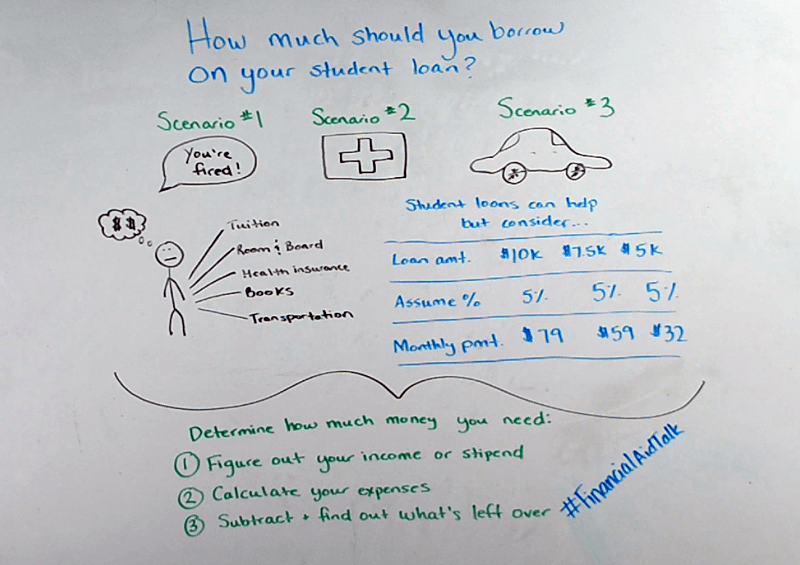How Much Money Should You Borrow Video

by International Student Loan
International student loans allow you to borrow up to the total cost of your education, minus as financial aid you have received. But you may wonder, "how much money should I really borrow?" Watch this video to learn more about how to determine the amount of money you should borrow so that you are financially responsible.
Whiteboard

Transcript
Hello, and thank you so much for joining us on today’s series: Finding Financial Aid for You. Today we’re going to talk about a very important issue facing all international students applying for student loans. How much should you actually borrow? My name is Jennifer Frankel and I’m from International Student Loan. Today we’re going to look at this subject in a bit more detail.
The ‘What If’s’
When you’re an international student applying for a college or university you’re going to have to show that you can afford the education expenses. You are going to have to show the school your bank accounts as well as other proof that you can actually afford your education. But what if something occurs unexpectedly? For example, what if you have a parent who gets fired from their job? Or you have a sponsor who has an unexpected medical condition and can’t afford your education? It’s also possible that you come to the United States with your accounts in order and then stumble upon expenses that you didn’t consider (like if you had to purchase a car – so not only are you making car payments, you’re also paying for insurance, gasoline, etc.).
Cost of Attendance
Every college and university lays out the cost of attendance including schools list the cost of tuition, room and board, health insurance, books and transportation. But if you are an international student, it’s no secret that you’re paying more than a US student for your education so it’s important to keep tabs on your expenses and use student loans only to pay the gap for your education expenses.
A Few Scenarios
We’re going to look at an example that clearly demonstrates how to determine the amount of money you should borrow in student loans. Here are three different student loan options in our example: $10,000, $7,500 and a $5,000 loan (notice that the cost of borrowing at 5% stays the same for all three loans). What we’re trying to show here, is the larger your student loan, the more expensive your monthly payments are going to be. So in the first scenario you are only paying $75 a month vs. the $32 payment if you had chosen to take a $5,000 loan. So it’s very important that you think about these expenses as an international student.
The Math
Step #1: Determine your income and stipend amount
Step #2: Calculate your expenses – including food, health and car insurance, leisure money, tuition, books etc.
Step #3: Subtract your expenses from your income
The answer to this little math problem can come out one of two ways: positive or negative. If the number came out positive, that means you may not even need to apply for a student loan and instead, can keep the extra funding in your pocket as a financial resource for later on. If your outcome was negative, then that’s the amount you will need to borrow in student loans. Keep in mind that you can apply for student loans throughout the year, so there’s no reason to feel like you have to take out the $10,000 loan when you really only need $5,000. If need be, you can always take out another student loan in the next semester.
#FinancialAidTalk
We hope this has helped you determine your expenses and how much money you should apply for when it comes to student loans. Follow us on Twitter, #FinancialAidTalk, where we are going to continue the conversation. So feel free to ask any questions you may have and we hope you found the video informative.
Get the Financial Aid Newsletter!
